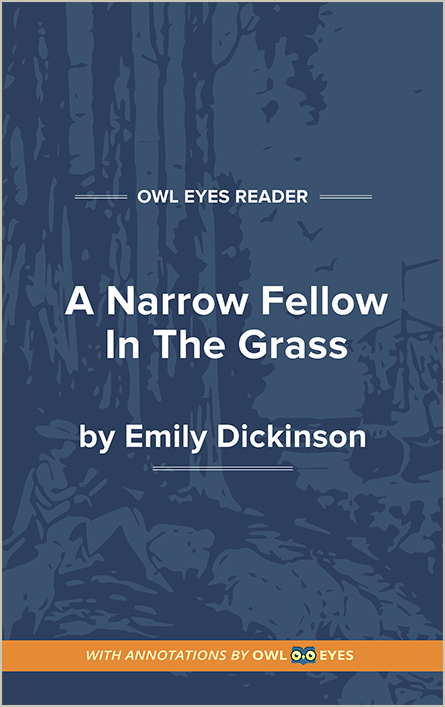- Annotated Full Text
- Literary Period: Realism
- Publication Date: 1890
- Flesch-Kincaid Level: 48
- Approx. Reading Time: 0 minutes
A Narrow Fellow in the Grass
Emily Dickinson’s “A Narrow Fellow in the Tall Grass” is a poem about the complex interactions between humans and the natural world. At the poem’s beginning, the speaker offers a personification of the snake as a “narrow Fellow.” As the poem continues, the many metaphors and projections the speaker places onto the snake—as person, as friend, as tool, as sexual metaphor—prove false. In the end, the speaker is left with a tightness of breath and a feeling of “Zero at the Bone.” Thus the poem is an effective parable of our flawed but inevitable tendency to approach nature through human terms, suggesting that it is often wiser to acknowledge the cold realities of the natural world. As the speaker comes to understand, snakes are snakes, not “narrow fellows.” The poem was first published in 1866 in The Springfield Republican under the title “The Snake.” Dickinson’s sister-in-law Susan Gilbert published the poem without the poet’s consent, resulting in added punctuation that she saw as a “mutilation” of the original poem. As Dickinson wrote, “It was robbed of me.”
- Annotated Full Text
- Literary Period: Realism
- Publication Date: 1890
- Flesch-Kincaid Level: 48
- Approx. Reading Time: 0 minutes

